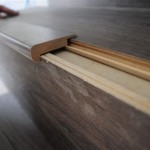How To Put Underlay Down For Laminate Flooring
Underlayment, often simply called underlay, is a crucial component when installing laminate flooring. It serves as a foundational layer between the subfloor and the laminate planks, providing various benefits that contribute to the longevity, comfort, and overall performance of the finished floor. Improper underlay installation can lead to a range of issues, from squeaky floors to moisture damage. Therefore, understanding the correct procedures for preparing the subfloor and installing the underlay is essential for achieving a professional-looking and durable laminate floor.
The primary purpose of underlay is to provide a smooth, even surface for the laminate to rest on. This helps to prevent the laminate planks from flexing, which can lead to premature wear and tear, and eventual breakage. Furthermore, underlayment acts as a sound barrier, reducing impact noise and creating a quieter living environment. Finally, many underlay types offer a degree of thermal insulation, improving the energy efficiency of the room. Some underlays also incorporate a moisture barrier, protecting the laminate from moisture rising from the subfloor, which is particularly important in basements or on concrete slabs.
Preparing The Subfloor
The first and perhaps most critical step in installing underlayment is preparing the subfloor. The subfloor must be clean, level, and dry. Any imperfections in the subfloor will telegraph through to the laminate flooring, potentially causing unevenness, squeaking, and damage over time. The type of subfloor will dictate the specific preparation methods required.
For wood subfloors, begin by thoroughly inspecting the surface for any signs of damage, such as rot, warping, or loose boards. Replace any damaged sections immediately. Next, check the subfloor for levelness. Use a long spirit level or straight edge to identify high and low spots. Minor deviations in levelness can be addressed using self-leveling compound specifically designed for wood subfloors. For more significant imperfections, it may be necessary to sand down high spots or use shims to raise low spots. Ensure that any nails or screws protruding from the subfloor are hammered down or countersunk to avoid damaging the underlayment.
After addressing any structural issues and ensuring levelness, thoroughly clean the wood subfloor. Sweep or vacuum the surface to remove any loose debris, such as sawdust, dirt, or remnants of previous flooring. Pay particular attention to corners and edges where debris tends to accumulate. A final wipe down with a damp cloth (ensure the wood doesn’t get too wet) can help to remove any remaining fine particles. Allow the wood subfloor to dry completely before proceeding with the underlayment installation.
Concrete subfloors require a similar level of preparation, but with some key differences. Start by inspecting the concrete for cracks, holes, or unevenness. Fill any cracks or holes with a concrete patching compound and allow it to cure according to the manufacturer's instructions. Leveling a concrete subfloor can be achieved using self-leveling concrete, which is poured over the existing surface and spreads to create a perfectly level base. It is crucial to follow the manufacturer's instructions carefully when using self-leveling concrete to ensure proper application and curing.
Concrete subfloors are also susceptible to moisture. Before installing underlayment, test the moisture content of the concrete. This can be done using a concrete moisture meter, which provides a direct reading of the moisture level. Alternatively, a simpler method involves taping a square of plastic sheeting to the concrete surface and leaving it for 24-48 hours. If condensation forms under the plastic, it indicates that the concrete contains excessive moisture. If moisture is present, a moisture barrier underlay or a separate moisture barrier membrane should be installed before the main underlayment.
Once the concrete is dry and level, thoroughly clean the surface. Sweep or vacuum to remove any debris, and consider using a concrete cleaner to remove any stubborn stains or residues. Ensure the concrete is completely dry before installing the underlayment.
Selecting The Right Underlayment
Choosing the appropriate underlayment is crucial for the success of the laminate flooring installation. Different types of underlayment offer varying levels of sound insulation, thermal resistance, and moisture protection. The specific needs of the room and the type of subfloor will influence the optimal choice.
Foam underlayment is a popular and relatively inexpensive option. It provides a basic level of cushioning and sound insulation. Foam underlayment comes in various thicknesses and densities, with thicker and denser options offering better performance. It is suitable for most residential applications, but may not be the best choice for areas with heavy foot traffic or where superior sound insulation is required.
Cork underlayment is a more environmentally friendly option made from natural cork. It offers excellent sound insulation and thermal resistance. Cork is also naturally resistant to mold and mildew, making it a good choice for basements or other areas prone to moisture. Cork underlayment tends to be more expensive than foam, but its superior performance and sustainability make it a worthwhile investment for many homeowners.
Combination underlayment, which incorporates a moisture barrier, is ideal for concrete subfloors or areas where moisture is a concern. These underlays typically consist of a foam or cork layer with a polyethylene film bonded to one side. The polyethylene film acts as a barrier to prevent moisture from seeping up from the subfloor and damaging the laminate flooring. When using a combination underlayment, ensure that the moisture barrier side faces down towards the subfloor.
Specialty underlayments are also available for specific applications. For example, some underlayments are designed to reduce noise transmission in multi-story buildings. Others are optimized for use with radiant heating systems. Carefully consider the specific needs of the installation when selecting the underlayment.
Regardless of the type of underlayment chosen, always check the manufacturer's specifications to ensure it is compatible with the laminate flooring and suitable for the intended application. Pay attention to the recommended thickness and density, and follow the manufacturer's installation instructions carefully.
Installing The Underlayment
Once the subfloor is prepared and the appropriate underlayment has been selected, the installation process can begin. Proper installation techniques are essential for maximizing the benefits of the underlayment and ensuring a long-lasting and trouble-free laminate floor.
Start by unrolling the underlayment across the subfloor. Most underlayments are sold in rolls, and the first step is to unroll it and allow it to acclimatize to the room temperature for at least 24 hours. This will help prevent wrinkling or buckling after installation.
When unrolling the underlayment, overlap the seams slightly, typically by 2-4 inches, as recommended by the manufacturer. This overlap helps to create a continuous layer and prevent moisture from seeping through the seams. Use seam tape specifically designed for underlayment to secure the overlaps. Press the tape firmly onto the underlayment to ensure a strong bond.
If using a combination underlayment with a moisture barrier, make sure the moisture barrier side (usually a polyethylene film) faces down towards the subfloor. This will prevent moisture from rising up from the subfloor and damaging the laminate flooring.
Cut the underlayment to fit around pipes, doorways, and other obstacles. Use a sharp utility knife to make clean cuts. Ensure that the underlayment fits snugly around these obstacles to prevent gaps or unevenness.
Avoid walking directly on the underlayment after it has been installed. Foot traffic can compress the underlayment and reduce its effectiveness. If you need to walk across the underlayment, use plywood or other protective materials to distribute your weight.
Continue installing the underlayment in sections until the entire subfloor is covered. Ensure that all seams are properly overlapped and taped, and that the underlayment is securely attached to the subfloor. Once the underlayment is installed, you can begin installing the laminate flooring according to the manufacturer's instructions.
Carefully inspect the installed underlayment before proceeding with the laminate flooring. Look for any wrinkles, gaps, or unevenness. Address any issues immediately to ensure a smooth and stable base for the laminate flooring. Taking the time to properly install the underlayment will significantly improve the performance and longevity of the finished floor.

How To Lay Underlayment For Laminate Flooring

Laminate Laying Underlay

How To Install Underlayment For Laminate Flooring Installation Mryoucandoityourself

How To Lay Laminate Flooring Underlay Carpet

How To Soundproof A Floor With Sound Underlayment Installing Mat

How To Install Underlayment And Laminate Flooring

Value Carpets Flooring How To Lay Laminate

Types Of Laminate Flooring Underlay Which To Choose

Laminate Flooring Underlay Guide Alliance Directory

How To Install Hardwood Flooring Pergo
Related Posts








